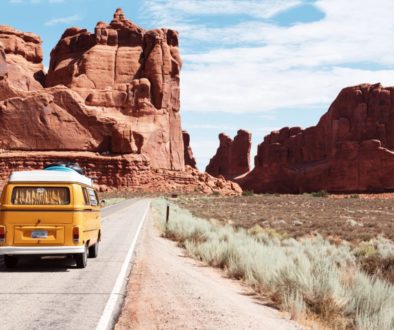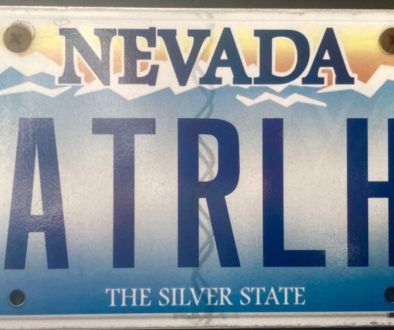Worst Case Scenario: 10 Things you need to know when lost in the woods.

I started this article about two months ago and almost did not finish and post it, due to the current climate of the world (Shelter In Place). After a little soul searching, I thought it was still a great idea. I can’t wait to have TOTAL freedom of movement again. I have already cancelled three trips and more upcoming trips pending at this time.
I personally do a lot of solo travel and I am prepared and vigilant on even short excursions, simply because I am adventuring to explore, return and share; Not to make it a one-way trip. Each year, more than 318 million people visit the 419 national park system sites alone. Approximately 2000 people get lost in the great outdoors in America every year. About 2500 Search and Rescue missions (SAR) are performed annually in the USA. On average, 35 resulted in fatalities. These stats are base line and probably bare bones since the BLM and U.S. Forest service for some odd reason do not collaborate data. Most incidents can be attributed to 4 things: lack of preparation, lack of knowledge, inexperience, and poor judgment. I consider myself very lucky as I have only twice needed back up; A safety whistle quickly got me out of what could have been a BIG problem.
Let’s now dig deeper and discover ten basic tips to keep you safe if your lost in the woods.
1. Planning: The most important tool needed to stay alive if you get lost is plan. Expect the unexpected, even for the shortest of trips and pack enough essentials so you can stay fueled, hydrated and prepared for any type of weather. Your essentials should at least include enough food and water for the activity you plan, a compass that you know how to use (You may want a GPS device, but those sometimes do not receive a signal, or the battery fails. Cell phones also likely will not work because of a lack of signal), appropriate maps (Study the terrain and your planned route. Know where you are going and how you will return), Sturdy hiking boots, clothes that you can layer depending on the weather conditions (and additional socks in case the ones you are wearing get wet), an emergency blanket/shelter, flashlight, matches kept in a water-resistant container, Safety whistle and other items that will help you survive overnight. Check with the local ranger district or forest office for special warnings, such as fires in the area, bear sightings, flooding, trail or road closures, etc. It’s also important that you leave a detailed travel itinerary of your plans, including the route and times of travel and when you will return and or check in as your journey progresses. I DO NOT recommend traveling alone.
2. STOP: As soon as you realize you may be lost think STOP; an acronym used to remind you to STOP, THINK, OBSERVE, PLAN. Stop, stay calm, stay put. Panic and fear are your greatest enemy.
3. Think: Go over in your mind how you got to where you are. What landmarks should you be able to see? Do not move until you have a very good reason to take your next step.
4. Observe: Get out your compass and determine directions based on where you are standing. You do NOT want to walk about without a plan. If you are on a trail STAY on the trail, most time you will come across markers but not always due to theft or vandalism. As a very last resort, follow a drainage stream downhill. This can often be a difficult path but could lead to a trail or road. Again, this can be very dangerous.
5. Plan: Based on your observations and thinking, come up with strategies, think them through and if you are extremely confident act on it. If you are not confident, its better to stay put. If it’s nighttime, or you have suffered an injury or you are exhausted, stay in place.
6. Discover the area and keep track of were you started. Staying in place is extremely important. It will increase your chances of being found. So as you are scoping the area, leave a marker: a pile of rocks, stack of wood etc. to mark your starting point and scout around and go back to your starting point in regular intervals.
7. Water: Water is your most important asset. You can survive weeks without food but only about three days without water. If you can find a water source, purify it. If you cant find a water source and you have run out of your personal supply, you can gather dew of the plants in the morning.
8. If threatened by night fall build a shelter: As soon as you believe you will be spending the night in the forest, think about how you will shelter. If you planned properly, you would have an emergency blanket/Bivy. Better yet, look for an abandoned structure in the area. Get creative to stave off exposure to wind, rain, cold/heat etc.
9. Build a fire: As soon as you know your spending the night, start gathering wood to build a fire. It is essential for keeping you warm,drying clothes, cooking food, keeping predators at bay, and can also signal your location. Do this before it gets dark.
10. Food sourcing: When venturing out for a hike be sure to bring lots of high calorie food, I always bring more than I need for the time I am out. If you run out, you can eat bugs and animals and cook them. If you are not sure don’t eat it! It’s better to stay alive and hungry. Consider fishing if there is a good water source nearby.
Each one of these ten points require some skill to execute, so do your homework and educate yourself on each of these points in greater detail.
At the end of the day, as with any crisis, staying positive and calm is your greatest asset! Be safe out there.
Cheers, Nomad


